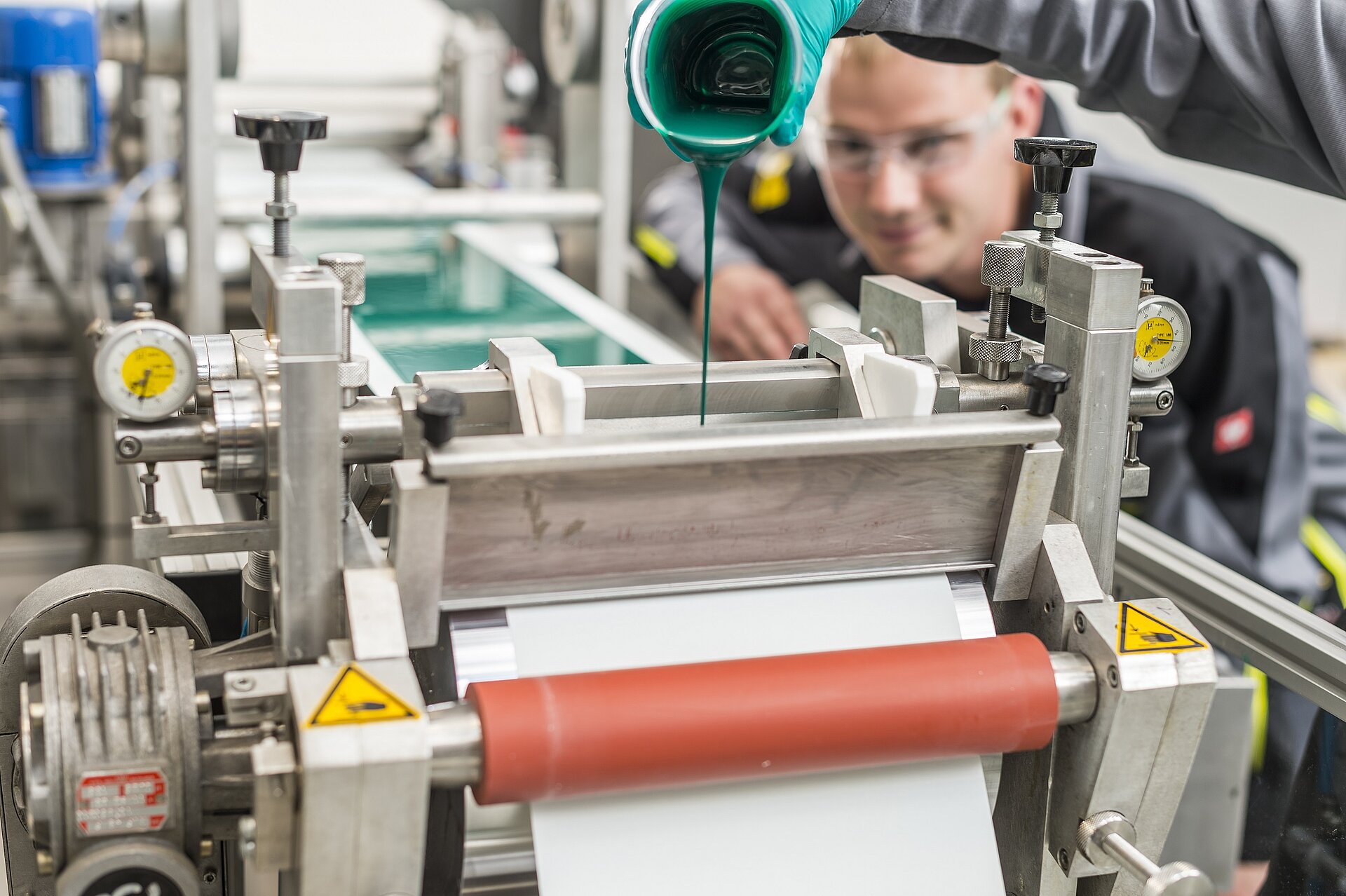In the laboratory and technical centre, the whole process chain for a continuous coating, right from compounding in lab trails to continuous manufacturing of rolled goods in varying width (20-75 cm) involving low viscous paste and thermoplastics as well can be realised. Hence, there exists high flexibility in selecting an apt fabrication process. Both the process variation can be considered equally in contemplating a product development.
In case of product related development, upscaling the process to pilot scale is part of the project. The advantage for the end user is on one hand the gained production relevant process parameter and on the other hand sample materials, which are available as rolled goods at a suitable processable width up to 75 cm. For such a development spread coating, gravure printing, extrusion and calendaring are preferred.
The technologies in our technical centre are available at any time to serve the clients. For queries regarding technological feasibility or experimental procedures, our head of the plastics technical centre, Herr Matthias Warnecke is gladly ready to respond.

Laboratories and Pilot Plants
Coating based on systems of low viscosity
Coating based on systems of low viscosity
Techniques
Coater process doctor blade/roll as direct or reverse process, air doctor, rubber blanket doctor
Roll coating via reverse roll coater
Gravure printing using gravure rolls
Impregnation
UV drying/curing
Lamination before and after the drying tunnel
Infiltration
Sluicing
Coagulation
Hot air drying
Radio frequency drying
IR/UV drying
Embossing/polishing
Delamination
Technological possibilities
Operating width: max. 750 mm
Speed: up to a maximum of 20 m/min
Explosion protection operations are possible
IR drying/tempering before and after the drying tunnel
Convection drying with three drying zones up to 260 °C
HF module, heating plate, IR curing units, UV drying possible
Stenter frame with insertion automatic (spiked/clip chain or carpet)
Embossing and lamination unit up to a surface temperature of 200 °C
Cooling before the winding unit,
separately driven delamination and rewind unit
Extrusion coating based on the melt
Extrusion coating based on the melt
Calender coating based on the melt
Calender coating based on the melt
Walzenschmelzanlage
Techniques
Plasticizing
Blending
Haul-off
Duplicating
Lamination
Coating
Polishing, embossing
Gap load measuring
Technological possibilities
Operating width: max. 650 mm
Coating support: 30 – 2,000 g/m²
Operating speed: up to 30 m/min
Melt roll temperature: up to 250 °C
Gap load indication
different lamination or embossing rolls
Hotmelt lamination
Hotmelt lamination
Techniques
Manufacture of duplex and triplex laminates using thermoplastic and reactive hotmelt adhesive systems
Dot coating
Continuous coating
Technological possibilities
combined gravure and multiple-roll application head
Operating width: max. 500 mm stepless
Temperatures: exceeding 200 °C
large processing viscosity
Mass preparation system
Innovative printing systems
Innovative printing systems
Techniques
Thermoplastic and hydroplastic processing for
3D printed electronics
Imprinting of 3D objects
Printing of systems with high viscosity
Inkjet printing
Additive manufacture with individual and standard compounds
Technical Equipment
Piezo-clocked printing technology
High-viscosity printing head
Multiple-die inkjet printing head
Five-axis control for complex 3D printed components
Light beam sintering NIRDot
Available space: max. 189 mm x 134 mm x 230 mm
Processing up to a maximum of 300 °C
Layer thickness from 0.15 µm
























